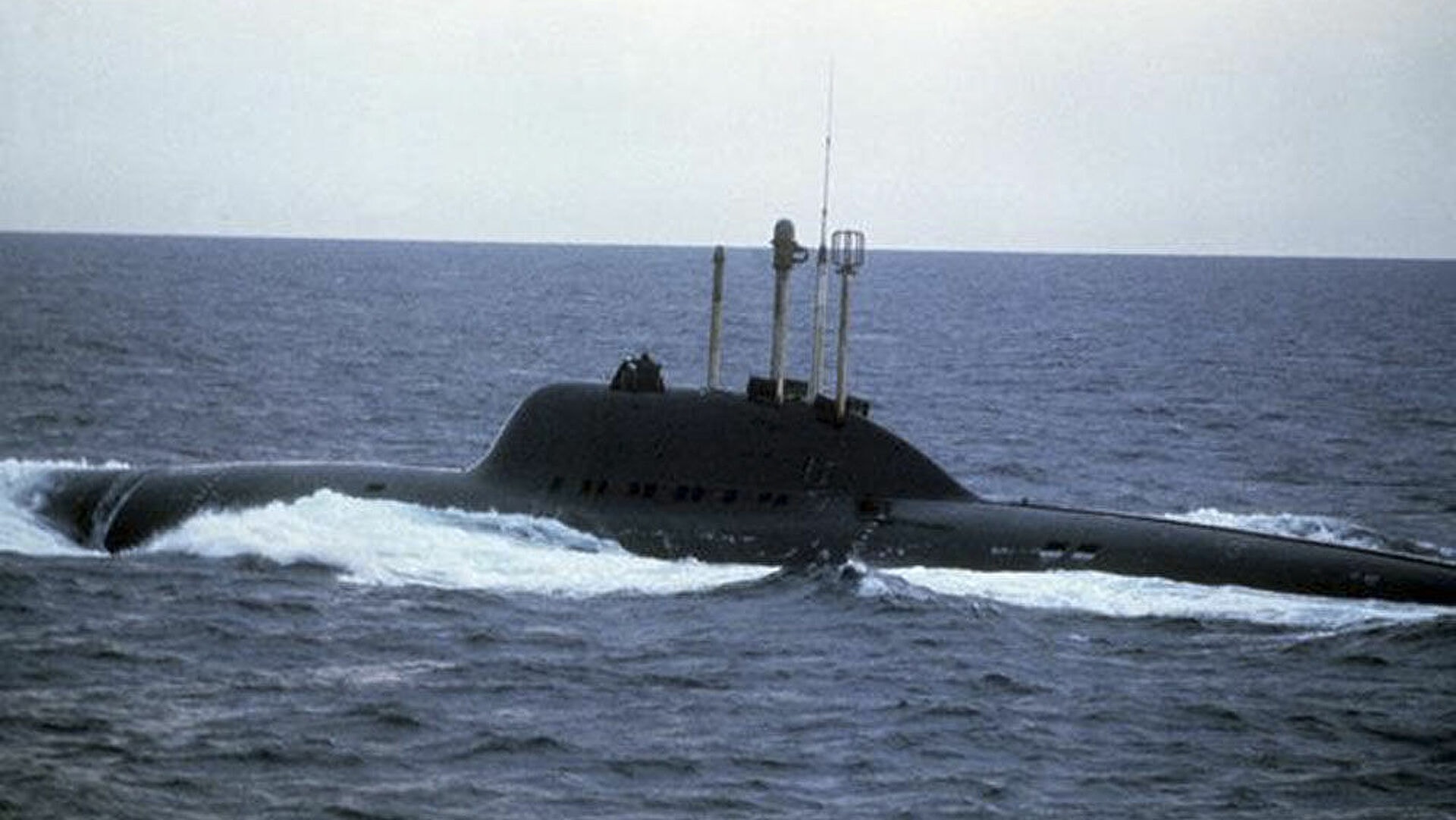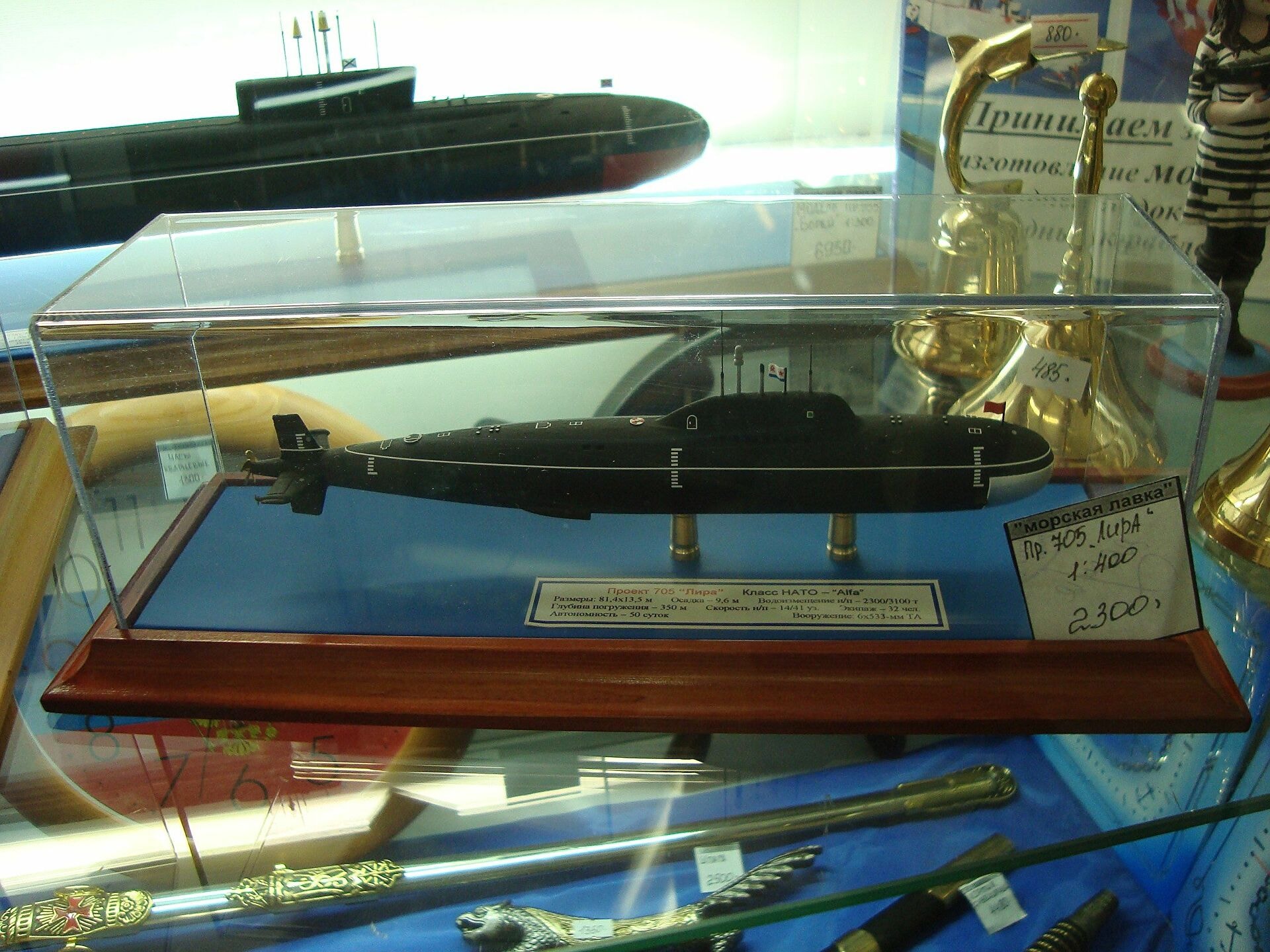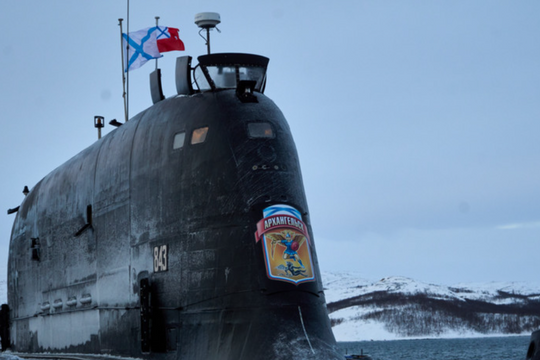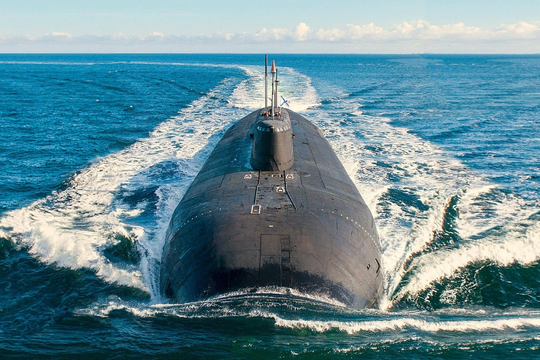Russia's 'Titan monster' submarines carry out missions at the bottom of the sea
(Baonghean.vn) - Titanium is an expensive metal, difficult to produce and process, but is lightweight, strong, corrosion-resistant (even in seawater), has non-magnetic properties and is not magnetized, the melting temperature of this metal is relatively high, above 1,650 °C. Thanks to these properties, titanium is used in the aircraft and rocket industry, in the shipbuilding industry.
 |
| Torpedo submarine 705 Lira. Photo: AP |
Superior deep diving capabilities of titanium alloy vessels
Soviet specialists built a number of submarines that were very fast and could dive to much greater depths than other submarines. These submarines were made of titanium, or more precisely, of titanium alloys.
Typically, the crew of a nuclear submarine consisted of 70-100 people. But in the 1970s and 1980s, the USSR had a whole series of nuclear-powered submarines with a crew of 32 people: only officers and non-commissioned officers, and only 8 members of the combat watch. They were fully capable of performing their tasks thanks to the highest level of automation, which at that time and even today has no analogues in the world. Everything was automated: the captain's console contained both the control and combat information system, the sonar system, the navigation and radar station, the radio communication and intelligence system, the control of the engines, as well as the weapons - six 533-mm torpedo tubes capable of launching both conventional torpedoes and anti-submarine rockets, and even the high-speed Shkval torpedo missile. Video cameras and a flight recorder – a device similar to an airplane's "black box" – monitored the operation of all units, complexes and systems on the ship. Air conditioning provided a microclimate inside the ship's compartments.
The submarine’s main engine is a 150 MW lead (Pb) and bismuth (Bi) alloy liquid-cooled nuclear reactor. This is a compact, very light reactor that “surges” very quickly and can stop automatically in an emergency. However, the main feature of this 3,180-ton submarine is that its hull is made entirely of titanium (more precisely, of titanium alloy).
 |
| Model of the Soviet Lira-class nuclear submarine. Photo: RT |
The official name of the ship is the multipurpose submarine Project 705 / 705K Lira (NATO code - Alfa). In fact, this is a combat vehicle capable of destroying submarines and surface ships: high speed (41 knots), operating in deep water, dynamic, able to perform high-speed maneuvers at an angle of 180 degrees and after 42 seconds move in the opposite direction, relatively quiet, able to instantly dodge enemy torpedo counterattacks.
The "super submarines"
In an interview with the Russian military TV channel Zvezda, the commander of a Lira-class submarine, Captain 1st Rank Gennady Baranov recalled: "When I first boarded this submarine, it was the most impressive moment, as if I were on Captain Nemo's Nautilus in the novels of the French writer Jules Verne, the "father" of the science fiction genre. I had never seen such super-ships, with so much automated electronic equipment. That was in the early 1970s!"
Mr. Baranov noted that the submarine crew members underwent a rigorous medical examination, as if they were candidates for astronauts. The sailors were specially tested for their ability to withstand stress.
Unfortunately, due to the technical complexity of the design and the many innovations it involved, the Lira-class submarines were quite expensive to operate. After the collapse of the Soviet Union, in the mid-1990s, for a number of reasons - both political (the short-sighted "camaraderie" between Russia and the United States at that time), and economic (the economy collapsed and the financial support of the military faced numerous difficulties), as well as technical (the ships were physically worn out and became obsolete) - the Navy removed these submarines from service and by 2010 they were completely scrapped.
But, this does not mean that Russian shipbuilders refuse to use titanium as a structural material. The general director of one of the Russian marine engineering design bureaus said: "Due to a number of important advantages, titanium can and should be used to build submarines! Titanium is lightweight - 40% lighter than steel, resistant to corrosion even in seawater. In addition, titanium is non-magnetic and does not attract magnetism!"
Finally, titanium is a durable material that can withstand extreme pressure. The absolute diving record for submarines - 1027 meters - was set on August 4, 1985 by the titanium-hulled K-278 Komsomolets, a Plavnik-class submarine of project 685 K-278. At that time, no one expected that, almost 4 years later, the same submarine would suffer an accident due to a fire in the stern compartment and sink in the middle of the Norwegian Sea.
Currently, the Russian Navy is the only military fleet in the world with submarines with hulls made of titanium. These are multipurpose nuclear submarines of project 945 Barracuda and 945A Kondor (NATO code names: Sierra-I and Sierra-II) that were built during the Soviet era, but later than the Lyra-class. According to data from open sources, they are 3 times larger than the Lyra-class in displacement, have more crew members, are slightly slower, but have much greater depth and ability to operate independently. Weapons - 533mm and 650mm torpedoes, anti-ship missiles and cruise missiles./.



.jpg)

